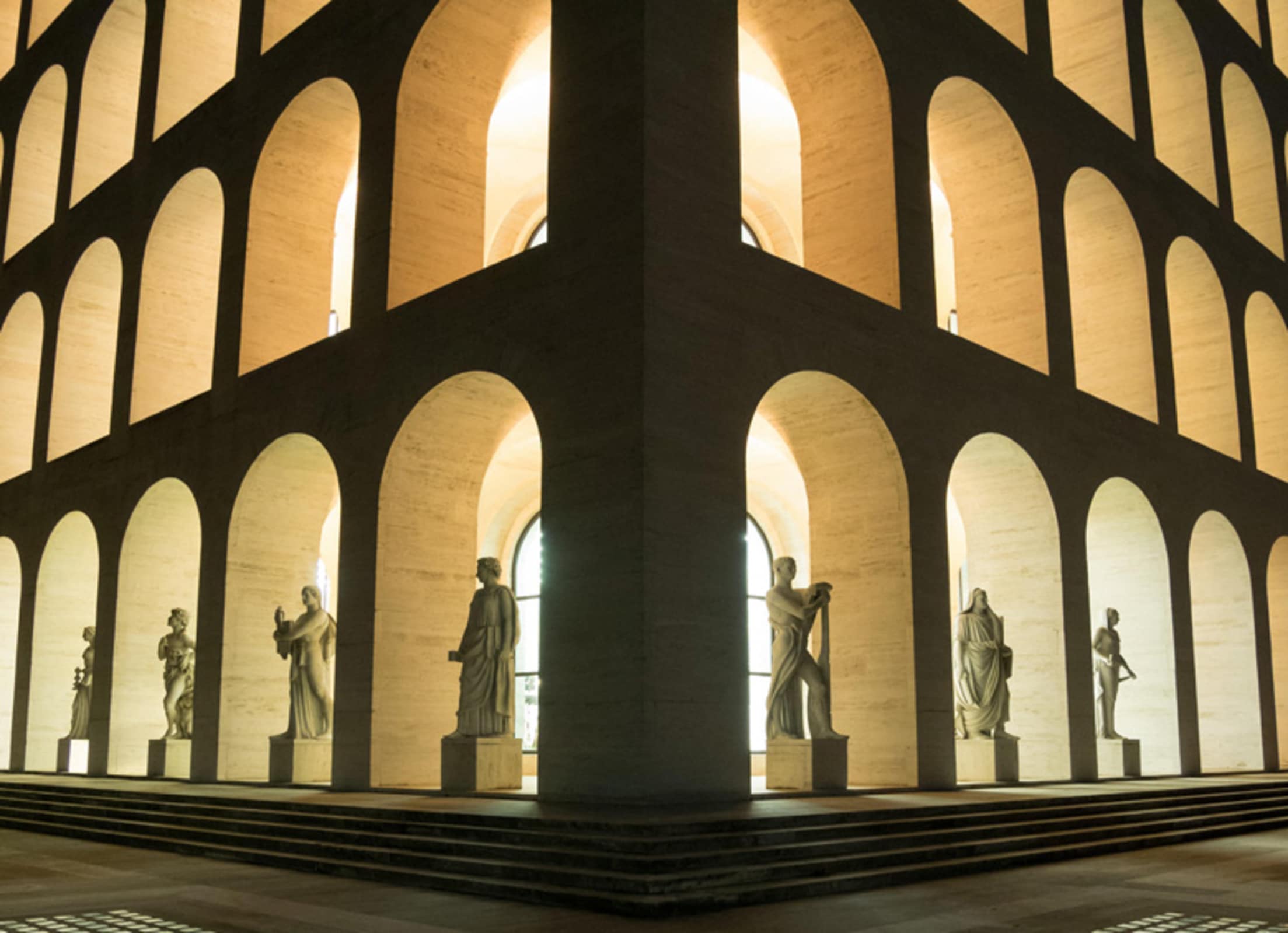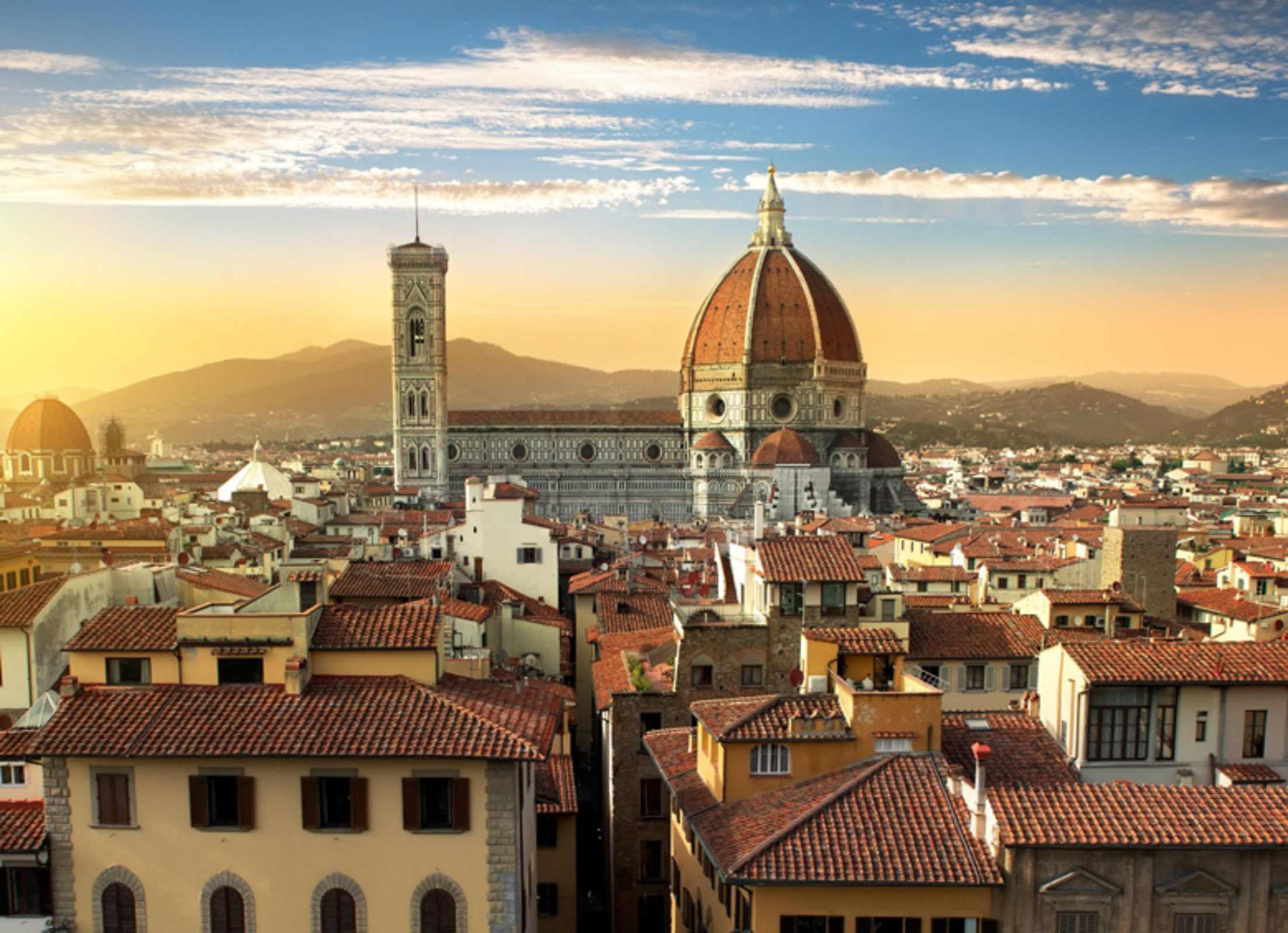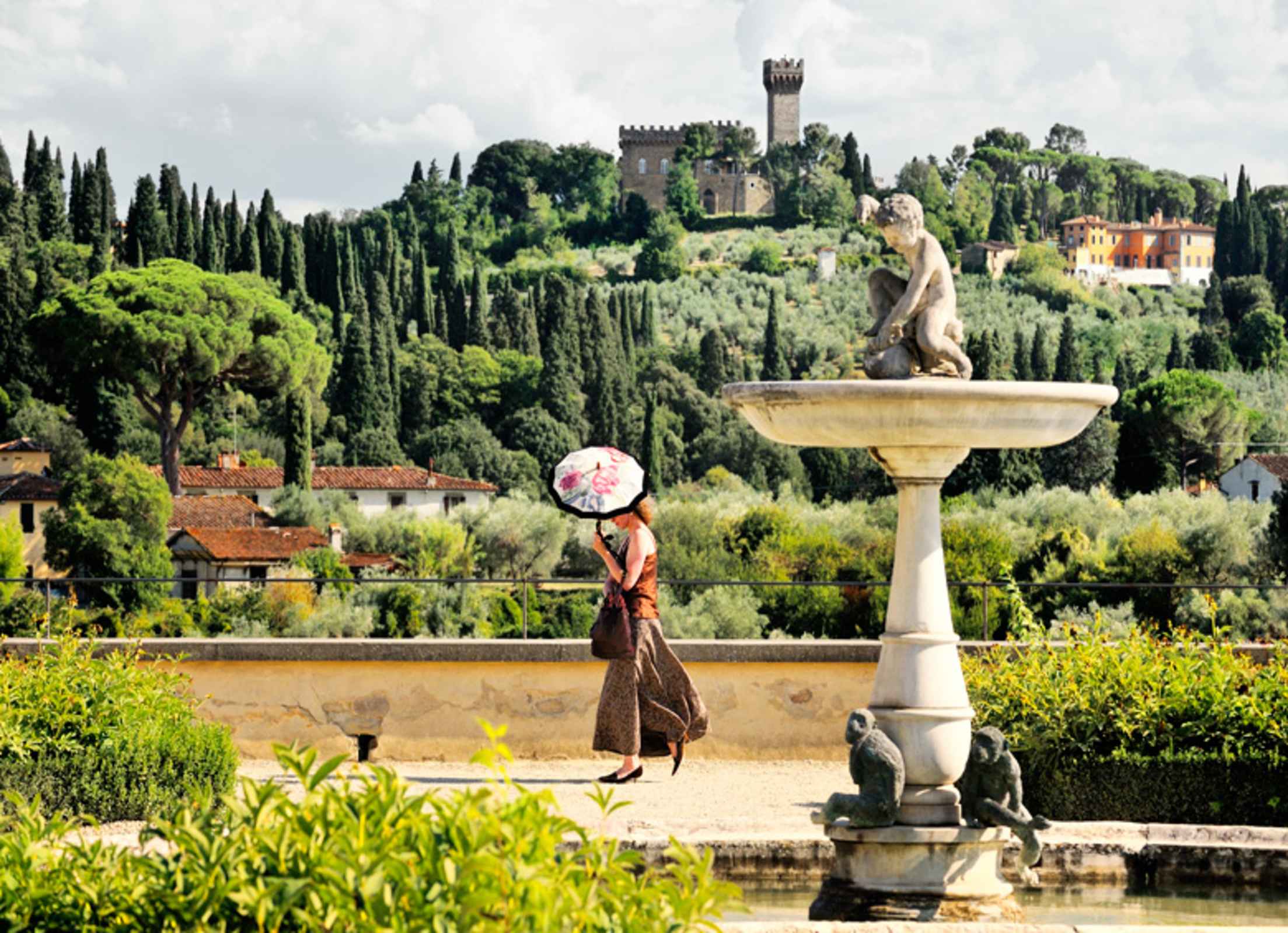
Rome or Florence? Here’s Why You Should Go to Both
Just a 90-minute train ride apart, Rome and Florence offer different experiences in one vacation.

I was a teenager the first time I stood inside the Colosseum in Rome, and what struck me the most about the massive amphitheater was the audacity of it. Not the audacity of the ancient arena itself—limestone lugged 20 miles from Tivoli, games lasting 100 days, 400,000 garish deaths—but the audacity of life having since gone on around it. The landmark today feels like an afterthought, albeit the kind thronged by 6 million tourists a year. To modern Romans, the city is a living metropolis, with fashion shoots and dentist appointments and other routine activities all buzzing about the great crumbling ellipse in its historic center.
The mad sprawl seems prefigured by the eclecticism of the Eternal City, which dates back some 27 centuries. Early architects commingled temples, public baths, high-rise tenements, and defensive walls alongside the amphitheater. Later structures by subsequent generations of innovators—from the ornate Santa Maria della Vittoria church designed by baroque master Carlo Maderno to the stark Palazzo della Civiltà Italiana complex that Mussolini fancied as a global icon of fascism—contribute to the wild mishmash. To visit Rome today is to wander around a primeval shrine to modernity.

I’ve never been 2,771 years old, so I can’t speak with authority, but something about the city’s classical heart seems connected to the thrilling magisterial chaos one experiences there. As expat writer Cary Tennis puts it, Rome has a charming brusqueness. Romans talk tough and brook no nonsense. (Customer service can be a delightfully gruff affair.)
Katie Parla, a culinary guide and author of Tasting Rome, recommends exploring places the locals may dismiss, such as little side streets and certain buildings said to look like wedding cakes. “Everyone loves to hate the Vittoriano,” she says, referring to the conspicuous national monument to Victor Emmanuel, the first king of unified Italy. “But if you go to the top, you can see all the different layers and textures of the city, and that’s a key part of its feeling."
Rome’s jumbled bits are forever being revitalized. This includes the Colosseum, which recently underwent a $20 million restoration. For the first time in 40 years, visitors can stand where plebeians once watched gladiators and big cats fight to the bitter end. Small groups accompanied by guides may ascend to the fifth level for sweeping views of the amphitheater and the surrounding bustle that nearly three millennia of civilization has created.

Florence
Just 170 miles north of Rome, the city of Florence—a product of the Renaissance rediscovery of antiquity—willfully differs from its counterpart. Whereas Rome thrives on coarse, boundless disarray, Florence shines with refined, deliberate order. Rome is hustle. Florence is finesse.
Florence’s defining landmark is the Duomo. Located in the historic center, the immense cathedral, which dates to 1296, initially sat for over a century without a roof, because no one could figure out how to erect a large enough dome to top its 180-foot high walls. Rain poured in. At last, a design contest was held, and a pushy goldsmith with zero architectural experience won. Brunelleschi’s revolutionary engineering scheme used brick and stone in place of the traditional wooden framework. The cupola remains an enduring symbol of the faith in ideas and ingenuity that started here in the 14th century.
Tourism in the Tuscan capital has exploded in recent years. But Florence being Florence, the city has taken steps to mitigate the crush. Exploring the Uffizi Gallery used to mean surrendering three hours to an interminable line. Now you can buy tickets in advance to skip the wait by using a separate entrance.
“Florence can feel a little like Disneyland, with everyone swarming around the square and going to see the Duomo,” Parla says. “But just behind it is this spectacular museum, the Opera del Duomo, which contains the original art that used to be in the Duomo. What you see in the cathedral are just copies.” The originals on display include Donatello’s Penitent Saint Mary Magdalene sculpture and Ghiberti’s Gates of Paradise, the gilded bronze doors that previously stood at the east entrance of the Baptistery of San Giovanni.

After hitting the highlights in the historic center, visitors angling for a less crowded experience would do well to head across the Arno River to the Oltrarno quarter, says Laura Fraser, author of An Italian Affair, a travelogue that starts in Florence. “Wander around in the Boboli Gardens, with its engineering scheme used brick and stone in place of the traditional wooden framework. The cupola remains an enduring symbol of the faith in ideas and statuary and ponds and manicured gardens, and you feel like you're in the 15th century,” she says.
With that mind-set, you’re well positioned to take in Santo Spirito basilica and square. You could snap photos of the Brunelleschi-designed church and queue up to see the Michelangelo-carved crucifix inside. Or you could slip into the Hotel Palazzo Guadagni, ride the elevator to the rooftop terrace, and grab a seat with a view. As you sip a Tuscan chianti, you can appreciate the sweeping landscape and watch honest-to-goodness intellectuals going about their business in the lively piazza below.
In a city that’s all about rebirth, some corners persist with few changes. Bookbinders, cobblers, leather workers, and jewelers still ply their trades in the relative calm of the Oltrarno. Being in their midst transports you back in time to that not-so-ancient history when, under Medici rule, the city’s first artisans began honing the same skills their descendants use deftly today. Here, too, life goes on.
AAA Members enjoy special benefits and discounts when booking flights through AAA Travel.